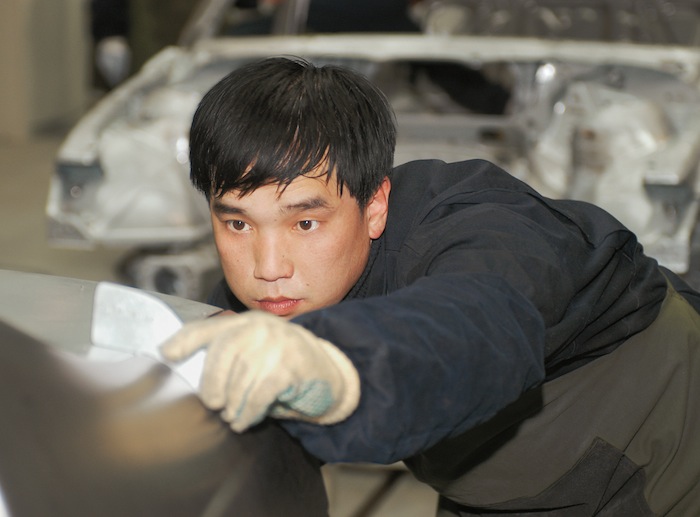Competition and demand in a country of huge scale and diversity makes for a prosperous, but uncertain vehicle logistics market
Vehicles logistics providers in China face some of the most challenging conditions in the world. As well as the sheer scale of the geography, providers move through topographic and weather variations that can increase lead times and damage rates. Rail currently accounts for fewer than 5% of vehicle movements, leaving most distribution to trucks of varying quality and standards. The biggest sales markets are also in megacities, many of which impose restrictions on trucks and traffic.
These factors tend to make deliveries relatively slower and costlier than in markets such as Western Europe or the US. In recent months, the pressure on lead times has only intensified. Light vehicle sales and production volume were up nearly 15% in 2013, expected to reach 20.7m units. With this growth, sources at a number of OEMs in China confirm backlogs of up to six months for popular models.
Such delays can be critical in China, whose consumers are some of the most demanding in the world, both in terms of pricing and in their delivery expectations. If a dealer in China does not have the desired car readily available, they risk their customers going elsewhere. Even many Rolls-Royce buyers, who are purchasing vehicles for more than Rmb 4m (nearly $700,000), often expect to drive off dealer forecourts almost immediately after purchase.
To meet such demands, some carmakers have re-engineered networks for speed. For example, while the lack of
multimodal logistics is a universal complaint, sources at OEMs admit they have regularly shifted some volume off rail or barge to reach dealerships faster. Lead times are such a competitive consideration in China that Qoros – a joint venture between China’s Chery and investors Israel Corporation that recently began production in Changshu, near Shanghai – promises dealers vehicle delivery within 48 hours of confirming orders, according to Leon Liao, senior manager for vehicle logistics.
Building freight to meet production
Pressure in the supply chain may only increase in the coming years as sales grow and OEMs add production capacity, including the joint ventures for General Motors, Volkswagen, Ford and Jaguar Land Rover. Analysts at IHS Automotive expect light vehicle sales and production to reach 30m units by 2020. “Sales will rise 9-10% per year up to 2016, after which point we expect it to moderate in line with GDP growth,” says Wang Zeng, senior analyst for China vehicle sales forecasts.
"In the near future we believe that transport intensity will remain high, but will be moderately reduced, falling short of GDP growth" - Xu Changming, China's State Information Consultancy Centre
According to Xu Changming, director of the resources and information department of China’s State Information Consultancy Centre, the logistics industry is also in line for strong growth. However, speaking at an automotive logistics conference organised by the China Federation of Logistics and Purchasing (CFLP), Xu said the country’s freight sector was inefficient, requiring double the resources relative to the American economy. “In the near future we believe that transport intensity will remain high, but will be moderately reduced, falling short of GDP growth,” he said.
Zhang Zhen Peng, vice-president of Beijing Changjiu Logistics, a large, private operator that transported 1.5m vehicles in 2013, warned the CFLP conference that logistics supply was already falling behind demand. “The question is how to conduct modular and tailor-made designs to increase our logistics capacity,” he said.
Time is money
Logistics faces bottlenecks that could restrain capacity further in the coming years, some caused by regulations and truck restrictions. The sector has also been waiting for clarity on the standard length of car hauliers, which has been an issue in China for a decade.
The Chinese outbound supply chain is also characterised by low margins and limited financing. Namrita Chow, Shanghai-based manager and senior analyst at IHS, says tight cash flow means there is barely any difference between the volume of vehicle production in China and wholesales. “The manufacturers need the money from every sale in order to build the next vehicle,” she says.
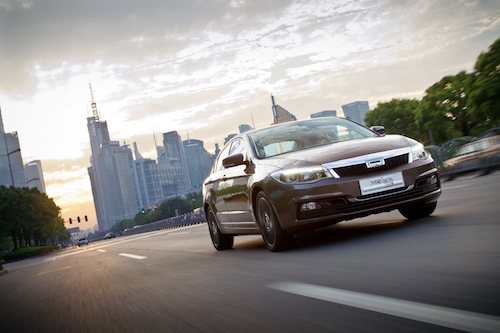
With financing and credit restricted in China, the car trade can often be a cash business. For example, carmakers or their distributors tend to process orders only after a dealer has paid for a vehicle. In the US, by contrast, carmakers invoice dealers 24-48 hours after delivering a vehicle.
“In China, once the car has been financially released, we send the order to the VDC [vehicle distribution centre], which then has 24 hours to prepare the car before the trucking company picks it up,” says Al Cardona, senior manager for vehicle logistics at BMW China (the national sales company and importer for BMW, Mini and Rolls-Royce).
Global quality standards
Given all these challenges, the vehicle logistics industry is resilient, meeting most demand at decent quality levels. Beijing Changjiu, which owns around 1,250 trucks and controls 3,000, has implemented its own IT systems for transport, warehouse, and yard management, says Mark Ding, regional marketing director. The company is also offering value-added services at some of its six distribution centres or at plants it serves, such as repair work or the installation of natural gas tanks, as it does for Beijing Hyundai and Chery.
Ding also says the company monitors its on-time delivery and damage rate and has been meeting high benchmarks.
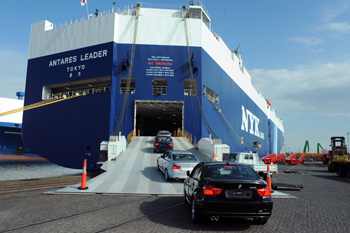
“The handling processes are similar and as efficient as in the US,” says Cardona, who worked at BMW in the US for 20 years, including managing a VDC and distribution on the west coast. “The damage rate is marginal, most of it smaller dents and scratches with very little heavy damage. That’s also similar to the US.”
Cardona adds that the KPIs at the terminals for in-and-out releasing are all within expected targets. Timings are subject to customs and CIQ clearance (quarantine), which depends upon the order of vessel unloading.
Cardona also praises the dockside and ro-ro infrastructure at BMW’s entry ports, with standards again similar to those in the US or Germany. He does see some access issues, however. “Some of the access and exit infrastructure could be improved,” he admits. “Where possible, alternate heavy load container traffic needs dedicated entry and exit roads.”
Hitting the road
Cardona says quality levels are also high for inland transport, for which BMW China uses NYK, Zero, Together and Changjiu Logistics (BMW Brilliance Automotive, the local joint venture, manages its own logistics and uses some of the same providers, as well as others). Damage rates are minimal and truck utilisation meets expectations. “The handover quality is very good – even better than in other countries as most trucks have two drivers and both of them inspect the vehicles,” says Cardona, who took over his position in the summer of 2013.
Cardona acknowledges that distribution is affected by road restrictions in certain cities, which require dealer drop-offs at special times or at night. While OEMs in the US and Europe are actually pushing for more out-of-hours dealer deliveries, Qoros’s Leon Liao – who previously worked in outbound for Volvo Logistics – says night deliveries are problematic for inspections and determining damage responsibility.
BMW China carries out bi-weekly VDC and transport audits, which include the quality of trailers. Cardona says most providers are maintaining equipment well, however he has noted issues with rust on trailers. “Sometimes we face the issue of flying rust, from trailer oxidation, landing on the vehicles’ paint, which can be a challenge for dealers,” he says.
While damage is low, BMW will introduce a further global standard to China next year when it starts using horizontal wrapguard, which will be applied at plants and left on until dealer delivery.
The long and the short of it
Many carmakers and providers acknowledge a serious problem around non-standard truck lengths and overloading. “The non-compliance of trucks leads to a lot of stops and fines,” says Liao. The official length of car carrier trucks in China is 16.5 metres, short compared to the US and European countries, where allowable lengths range from 18.75-25.5 metres. However, the limit is enforced haphazardly, leading many companies to carry dangerously long loads of 20-25 cars. Most companies factor fines into their rates, as the load benefits outweigh the penalties.
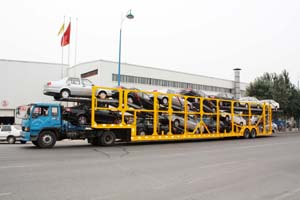
For years, Chinese officials have said that they would enforce the limit with vigour, including revoking the licences of offending companies and drivers, but many provinces have applied the rules inconsistently or disregarded them altogether. Roger Zhang, director of international business at Beijing Changjiu Logistics, says there are rumours that enforcement could become tighter as early as 2014.
Guizhou province, south of Sichuan, has already increased enforcement, but according to executives at one carmaker, companies have responded by rerouting around the entire province, increasing lead times, cost and emissions.
The Chinese Automotive Logistics Association, a chapter of the CFLP, has said it is currently working with the government to develop a standard for car transporters that would be acceptable to industry, but the situation remains uncertain.
Multimodal velocity
Although there have been instances of switching to road to increase speed, investment in multimodal logistics has risen in China. That is partly in response to the looming truck standards issue, but also to relieve bottlenecks as volumes rise further. Beijing Changjiu, for example, is expanding its network of six vehicle distribution terminals with investments in two terminals that will offer barge and short-sea shipping. Zhangjiagang, located along the Yangtze river, will be able to receive and ship vehicles east to Shanghai as well as to the west, according to Zhang.
Another facility is at Qingdao, close to Dalian in the north, which has been licensed for vehicle imports and will also be able to send and receive cars by short sea. Beijing Changjiu already owns one ro-ro vessel and has plans to invest in another two. “We are also co-operating with Anji Logistics to put all ro-ro volumes in one pool, so we share the customers to improve loading efficiency,” says Zhang.
Others are looking at adding distribution hubs to increase velocity. To meet its target for 48-hour delivery outside the Shanghai region, Liao says Qoros will set up a network of distribution hubs around the country. “We are also thinking about a future multimodal transport strategy,” he says. “While in the beginning we will rely entirely on truck, as volumes increase we hope to use barge and short-sea shipping to ports like Guangzhou or Tianjin.”
Cardona says BMW wants to work more closely with the BBA joint venture to improve delivery times and use resources better. BMW China and BBA already share a distribution centre with capacity for 1,000 vehicles in Xi’an, 1,400km west of Shanghai, but with the growth in BMW imports (about 20% in the first ten months of 2013 to 163,000 vehicles) and joint venture production, Cardona says the company is looking for more opportunities.
“We’re looking at how we can work together to find synergies,” Cardona says. “We are studying using the port of Dalian, for example, from which BBA production could move by short sea to Guangzhou, where it could be combined with imports for inland distribution.”
A strange, but functioning market
The Chinese market remains both prosperous and uncertain terrain for providers and logistics managers. At the CFLP conference, Yu De, managing director of Anji Automotive, called 2013 “a year of harvest” and praised the advances that automotive logistics had made in technology and service.
Yet the sector remains cost driven, with executives pointing to ‘transactional’ relationships more than co-operative ones, limiting investment in equipment and services. “There is really intense competition in the market and often it means cuts in prices without end,” says Roger Zhang.
In China, local OEMs also tend to have in-house providers that dominate business for those brands and their joint ventures, such as Anji for SAIC, FAW Logistics for the FAW Group, or CML for Changan.Ding and Zhang say that private companies like Beijing Changjiu are not guaranteed the large volume of service these providers get, however they believe their company’s independence makes it more flexible and reliable when serving a range of customers in a network, since it is not bound to any single plant or OEM.
"There is really intense competition in the market and often it means cuts in prices without end" - Roger Zhang, Beijing Changjiu Logistics
While the prevalence of in-house providers means China is not an entirely open market, there is a large array of private companies working in vehicle logistics, from terminal operators to car hauliers. The import arms of foreign carmakers, such as BMW China, are not obliged to work with local partners’ in-house providers. Also, companies like Beijing Changjiu often work as subcontractors for such providers. Some of these companies have not necessarily been able to keep up with the rapid growth across their owners’ sprawling operations, especially the joint ventures. Beijing Changjiu recently won business with FAW-VW’s new plant in Foshan, Guangdong Province, which is building the Golf and the Audi A3.
“This is a very important contract for us,” says Bill Wang, investment director at the company.
Qoros, which is currently contracting its export and China domestic vehicle logistics network, has recently appointed NYK as the yard operator at its plant in Changshu. According to Mike Dickinson, director of customer order management and logistics, response from the outbound market in China was very competitive, with providers showing an openness to change – especially compared to inbound logistics. “There were more vehicle 3PLs interested in taking a partnership approach, where we could work together on specific details of the operation as they developed,” he says. “The inbound side was more difficult, but for outbound, providers were very responsive.”
Ultimately, many in-house logistics providers are also leading developments in automotive logistics, including barge and short-sea flows for Anji, FAW Logistics and CML, as well as rail for Anji. The co-operation between Anji and Beijing Changjiu for short-sea shipping is an example of more mature attitudes in the sector.
China’s vehicle logistics industry faces unique regulations and market competition, but its development is by no means slow as a result. Meeting customer growth and expectations, however, will be critical for carmakers and providers. Given the expected rise to 30m vehicles, there will be a lot to lose if they cannot keep up.
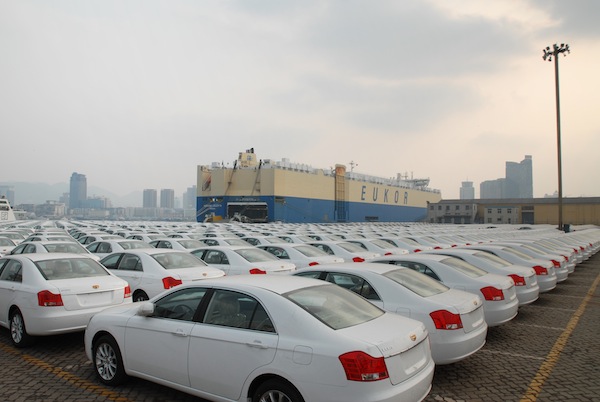
“The appreciating renminbi is another factor that influences Chinese exports,” he says. “It’s possible next year will recover strongly, but forecasting for such markets is very difficult.”
One carmaker that has maintained growth this year has been Geely, whose exports are expected to reach 120,000 units (about 50% of which were kits), which is 20% higher than in 2012. Wang says this growth is partly the result of Geely’s new model investments, in which he says the company is ahead of other Chinese brands, including Chery, the country’s largest vehicle exporter.
“We expect Geely to eventually surpass Chery in exports from China,” says Wang.
According to Jenny Jin, vice-president with responsibility for supply chain at Geely’s export sales company, Geely International Corporation (GIC), the privately-owned OEM has been trying to improve control and visibility over its exports, including sharing forecasts with suppliers and logistics providers and issuing frequent updates. “Around the 20th of every month we can usually fix our orders for the next month. Thirty days is usually enough to secure capacity with ro-ro carriers,” she says.
One of the main ways that Geely has been improving its order-to-delivery costs is by switching delivery terms to CIF (cost, insurance, freight), giving the carmaker responsibility until the port of entry in the destination market. Prince Chen, logistics manager for GIC, says the change has helped Geely to better monitor operations. “These terms give us more control over the shipping times, including influencing the pickup time and the loading,” he says. “Without this control, we end up paying late fees for having our cargo at ports for too long. Instead, we have reduced demurrage by 30% year on year.”
Jin says that GIC is looking increasingly at ‘door-to-door’ solutions for its exports, including contracting ro-ro carriers to manage the overseas dealer delivery (pre-carriage in China is managed by Geely’s domestic logistics team). “With this we get a good result, and we don’t waste management resources on areas where we are not experts,” says Jin. “We manage the pick-up and delivery KPIs, and don’t focus on everything in between.”
PDI systems
There are contrasts in the quality levels for export port operations compared to imports in China. Not all Chinese OEMs carry out PDI at terminals, which could mean exporting cars with damage or quality issues that may have arisen during transport. Cars might show up at ports dirty, poorly secured or damaged.
Geely, however, does have a PDI system, which it contracts to its aftermarket service provider at ports. “They have facilities at the port, they have our systems and they have warehouses with spare parts, so it makes sense,” says Jin. “We find them to be very professional.”
The PDI itself is fairly basic, she adds, and includes an inspection and necessary repairs, but rarely any technical work or washing. “Import cars are more profitable and have a more complex service. For exports, it’s not possible,” she says, “but at least we have a system in place.”

























![Global[1]](https://d3n5uof8vony13.cloudfront.net/Pictures/web/a/d/s/global1_726550.svgz)




